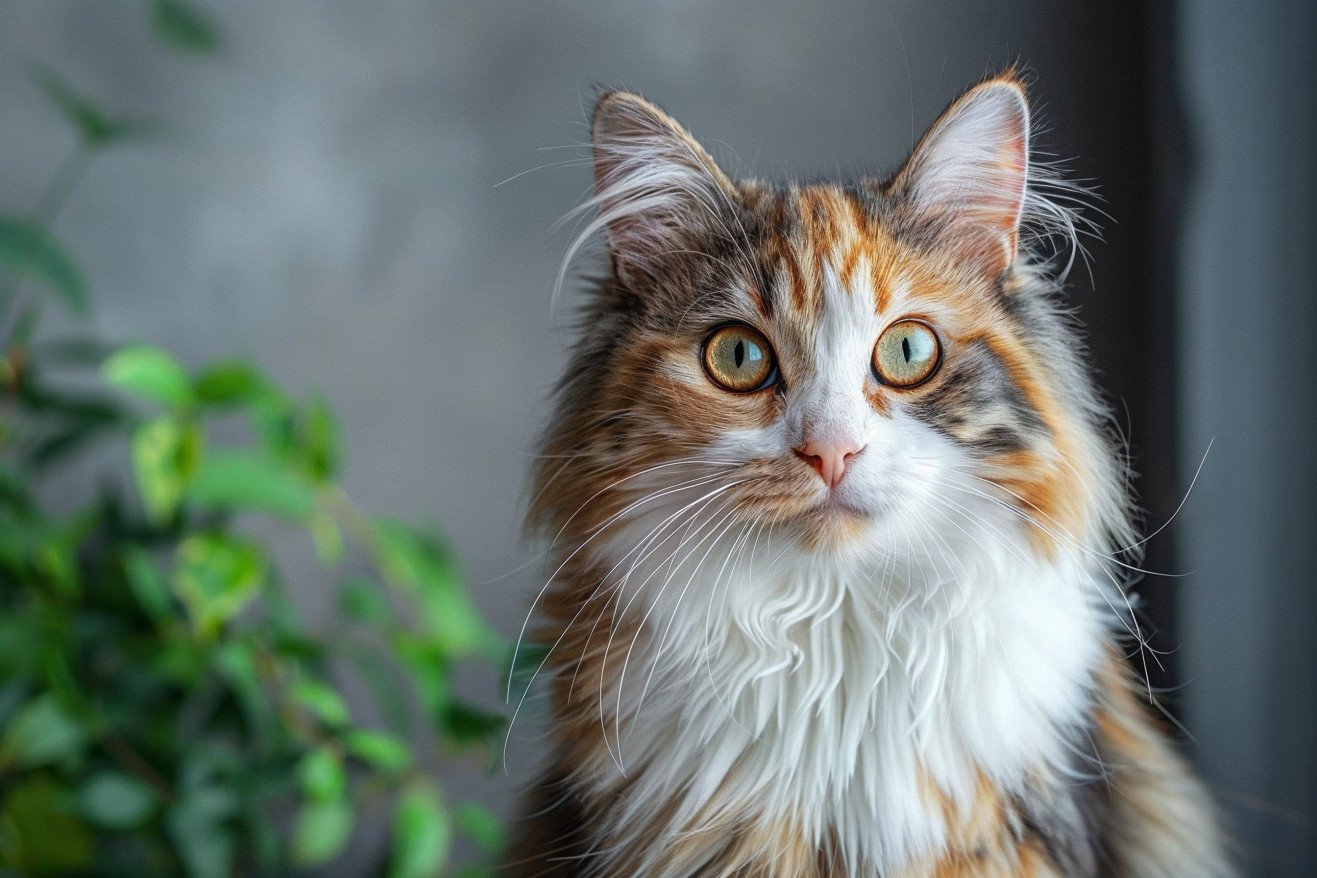Do Cats Laugh? A Look at Cat Vocalizations
4 May 2024 • Updated 3 May 2024

If you’ve ever heard your cat make a funny “huff-huff” sound that seems like laughter, you may have wondered if cats can laugh. While cats don’t laugh in the way humans do, with a “ha-ha” sound, they do have vocalizations and behaviors that are similar to laughter and are used to express positive feelings and social play.
In this article, we’ll explore the scientific research in the fields of animal behavior, cat vocalizations, and evolutionary biology to find out if there’s any evidence that supports the idea of cat “laughter.” This investigation will also look at the different theories that have been proposed to explain cat laughter and how it may be used in cat communication and social interactions. By the end, you’ll have a better understanding of the emotional world of our feline friends.
Do cats laugh?
Purring, Chirping, and Chattering: What Do These Cat Sounds Mean?
In addition to meowing, cats make a variety of other sounds that have different meanings and uses. The Humane Society explains that while purring is often a sign of happiness, cats will also purr when they're sick or stressed, suggesting that it's a form of self-soothing. Chirps, trills, and the "prrrrupttt!" chortle sounds all indicate that a cat is happy and are believed to be similar to laughter in humans.
These sounds have likely developed as a way for cats to communicate with their people and other cats. Mother cats use chirps and trills to call their kittens, and cats will often chatter or trill when they see birds, which may mean they're thinking about a tasty meal. PetMD also points out that when a cat looks you in the eyes and then meows, it's a sure sign that they're happy and feeling affectionate.
That said, it's important to consider the context and the cat's body language when you're trying to interpret their sounds. For example, if a cat is making a sound that's typically associated with hunting, like chattering, they may be feeling playful, but if they're crouched and their eyes are dilated, they may be feeling anxious. Similarly, while a cat's meow may be a sign of happiness, if they're also hissing, it's likely that they're feeling threatened.
That said, if a cat's meow is accompanied by a relaxed body, slow blinks, and soft purring, it's a good indication that they're feeling happy and content. By learning to interpret the many sounds that cats make, you can better understand your cat's emotional state and the many ways that they express their happiness.
The Science of Cat Emotions: Can They Feel Happiness?
Cats have brains that are structurally similar to human brains, which means they may be able to experience emotions in ways that are similar to humans. Per Petfinder, while nobody can "prove" that a cat can feel love, they do exhibit behaviors that are associated with love, including showing affection, forming strong bonds, and demonstrating loyalty and concern for their owners.
Research has also shown that cats can pick up on human emotional signals. A study from Italy found that cats could differentiate between positive and negative human and feline facial expressions. Meanwhile, a study published in PMC showed that cats have a general mental representation of the emotions of their social partners, whether they are cats or humans.
Cats also form strong emotional connections with their owners, showing signs of separation anxiety and even responding to their owners' emotional states. Although cats may not experience more complex emotions like guilt and jealousy, there is evidence that they can feel more basic emotions like happiness, fear, and sadness. This is important to keep in mind when trying to understand their 'laughter-like' behaviors and overall happiness.
Cat Body Language: Understanding the Signs of Happiness
Cats use body language to express their feelings in addition to meowing. Purina explains that a happy cat will have a relaxed body with ears that are upright and facing forward and a tail that is still or held high with a slight curl. Cats also slow blink or squint when they are happy and content, especially when they are being petted, and purr softly.
Kneading, drooling, and headbutting their owners are other ways that cats show happiness and affection. On the other hand, a cat that is unhappy or stressed may show signs of aggression, including lashing their tail and flattening their ears. The Spruce Pets explains that in order to accurately read a cat's mood, it's important to be able to recognize both their vocalizations and body language.
How to Strengthen the Bond With Your Cat
Cats can form strong attachments with their owners, and these bonds are similar to the attachment that dogs and human babies form with their caregivers. The Humane Society of Greater Dayton explains that signs of a strong bond in cats include greeting their owners, using them as a secure base, and experiencing separation anxiety when they're not around. Imprinted cats may also copy their owners' actions, make unique sounds, and experience distress when they're separated from them.
The Wildest explains that other behaviors, including meowing, kneading, following, and bringing 'gifts' to their owners, can also be signs of a strong bond. If your cat kneads, makes unique sounds, and seeks out your company, they're showing that they trust and care for you deeply. Ars Technica even reports that most cats will seek out their owners when they're stressed, demonstrating that they rely on their humans for comfort and support.
Recognizing these signs of bonding can help you build a strong relationship with your cat and ensure that they're happy and well-adjusted. If you know the signs that your cat has imprinted on you, you can work to strengthen your bond with them and make sure that you're meeting their needs for care and companionship.
How to Make Sure Your Cat Is Happy
One of the most important things you can do to ensure your cat is happy is to make sure they have a stimulating environment. Purina explains that toys, scratching posts, and hiding places can help cats play and reduce stress. Regular exercise and playtime with their owners can also help cats express their natural hunting behaviors and strengthen the human-cat bond.
In addition to stimulating environments, keeping a consistent schedule and providing high-quality food can help contribute to a cat's happiness. The Rover blog points out that cats that are eating, sleeping, and grooming normally are probably happy and healthy.
Positive reinforcement training can also help strengthen the bond between cats and their owners while keeping them mentally engaged. As mentioned by Curiosity Trained, it's important to understand and meet a cat's individual needs and preferences to ensure they are truly happy and well-adjusted.
By following these tips, cat owners can make sure they have a happy, healthy relationship with their cats.
Conclusion: Understanding the Feline Smile
Although cats don’t laugh in the way that humans do, their vocalizations, body language, and behaviors can offer valuable insights into their emotional states. From purrs and chortles to slow blinks and kneading, cats have a range of ways to express happiness and contentment.
Learning to recognize these “laughter-like” behaviors can help people better bond with their cats and ensure that their feline friends are happy and well-adjusted. By learning to recognize and respond to a cat’s individual needs and preferences, people can help ensure that their pets are happy and well-adjusted.


